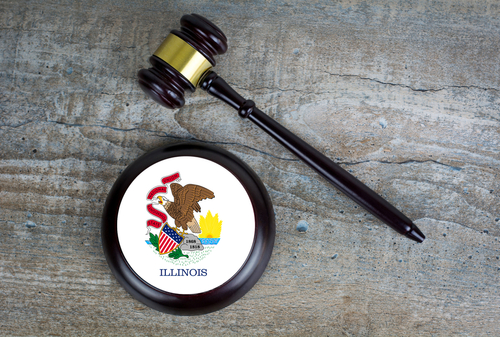Law Day 2018: The Balance of Power

Photo of Hilarie Bass courtesy of the Office of the President
The concept of “separation of powers” has been very much in the news lately—and not in a positive way. At times, respect for this fundamental concept appears to be breaking down.
A disintegration of the checks and balances among the three branches of our government can have a destructive outcome. Our constitutional framers understood that too much power amassed by one group or one person, without appropriate checks in place, would destroy the balance that protects the framework of our democracy.
The breakdown can manifest itself in many ways. The legislative branch might fail to effectively provide oversight on the executive branch. Our lawmakers might launch personal attacks on judges after rulings they disagree with. The balance could also be swayed if the executive branch circumvents the lawmaking duties of Congress, or when legislators seek to slash judges’ pay—or even try to impeach them—because they hand down unfavorable decisions.
Though the term “separation of powers” does not appear anywhere in the text of the United States Constitution, the concept of three separate but equal branches of government is one of the most important ways our government defends the liberties essential to our democracy.
As James Madison wrote in The Federalist #47: “The accumulation of all powers, legislative, executive, judiciary … may justly be pronounced the very definition of tyranny.”
Unfortunately, much of our citizenry is ignorant of the concept of separation of powers. A 2016 Annenberg Public Policy poll found that only 26 percent of Americans can even name the three branches of government.
How safe is the framework of separation of powers and the critical concepts it protects, such as judicial independence, if so much of the citizenry does not even know the system exists — or what its role is?
That is why the 2018 theme for Law Day, “Separation of Powers: Framework for Freedom,” is so important—to lawyers, to our communities and to our children.
Law Day is observed annually on May 1 and celebrates the role of law in our society. Events are held across the country on and around that date with the goal of cultivating a deeper understanding of the legal profession and its importance to our nation.
State and local bar associations from across the country are organizing hundreds of events in their communities to engage and educate both students and adults. Essay, poster, photography and video contests are being held throughout the country, from Springfield, Mass., to Houston, Texas. Many colleges and universities bring in high school students for a full-day workshop such as Cabrillo College in Santa Cruz, Calif., and John Jay College in New York. The Idaho Bar Association is holding a podcast contest for high school students, and there are even 5K Law Day runs in places like Ventura, Calif., and Orange County, Fla.
To recognize people who have promoted a better understanding and respect for the rule of law, many bar associations also hold award luncheons or dinners. The Liberty Bell Award, presented by local bar associations on Law Day and endorsed by the ABA, was established more than 40 years ago to acknowledge outstanding community service and was given to a lawyer or judge who encouraged greater respect for law and the courts. Some associations, such as the State Bar of Michigan and the Mecklenburg County Bar in Charlotte, now reserve the award for nonlawyers who have contributed to good government in the community.
The ABA Division for Public Education has a planning guide on its website that can help you organize an event that works for your community. Please consider volunteering in your community for this critically important public education effort.
We all can make a difference, and Law Day 2018 is a good place to start. Our institutions must be protected and preserved. By understanding and safeguarding the way power is shared in our government, we can uphold our liberties and advance our rights.
See this year’s Law Day planning guide online at ambar.org/LawDay2018.
Follow President Bass on Twitter @ABAPresident or email [email protected]. This article was published in the April 2018 issue of the



